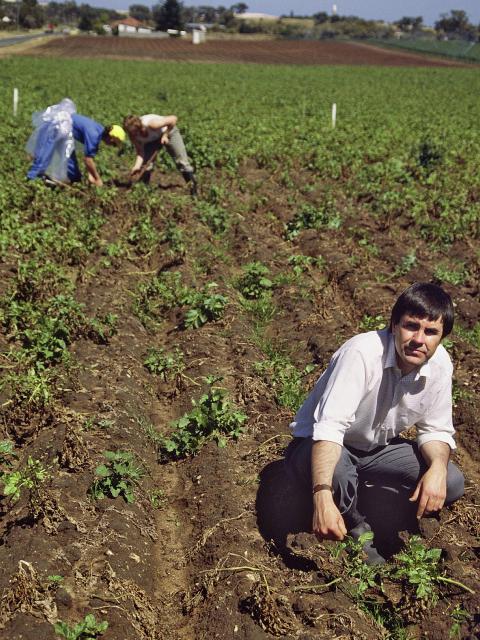Introduction
Potato cyst nematode (Globodera rostochiensis, PCN) originated from the Andean highlands of South America and developed in close association with potato plants. Therefore it has the ability to succeed wherever it is possible to grow potatoes and has spread to many potato growing areas of the world by the transport of potatoes and infested soil.
It occurs in many countries across Asia, Africa, Europe and North and South America. Different pathotypes or races of G. rostochiensis and G. pallida are found in different parts of the world. They also damage tomatoes, aubergine and other members of the Solanaceae plant family, including nightshade.
Potential impact
Potato cyst nematodes live in and feed on potato roots, causing substantial damage to root systems. Populations can get to levels that significantly reduce yields before above ground symptoms become visible. In highly infested paddocks, PCN can reduce yields of susceptible cultivars by up to 90% (Figure 1).
In Australia, PCN occurs in three quarantined areas in Victoria and was detected on a limited number of properties in the Perth Metropolitan Region in Western Australia (WA) between 1986 and 1989. A stringent eradication program was undertaken and strict quarantine controls instituted.
After continuous monitoring and three state-wide surveys over 25 years there have been no detections since 1989. WA has successfully proven PCN eradication and Area Freedom from PCN has been nationally and internationally recognised. See Area freedom from potato cyst nematode for more information. This eradication of PCN was a world first.
This nematode has the potential to cause significant damage to the Australian potato industry through crop losses and the loss of export markets. A PCN occurrence can cause considerable production constraints, but also restricts domestic and overseas market access and imposes additional costs for quarantine testing and surveillance.
Stringent quarantine protocols are in place throughout Australia should there be further detections.
Hosts
The major hosts of Globodera rostochiensis are restricted to the Solanaceae family — potato, aubergine and tomato. WA weeds which are known hosts include Solanum nigrum (blackberry nightshade), as well as numerous other Solanaceous weeds.

